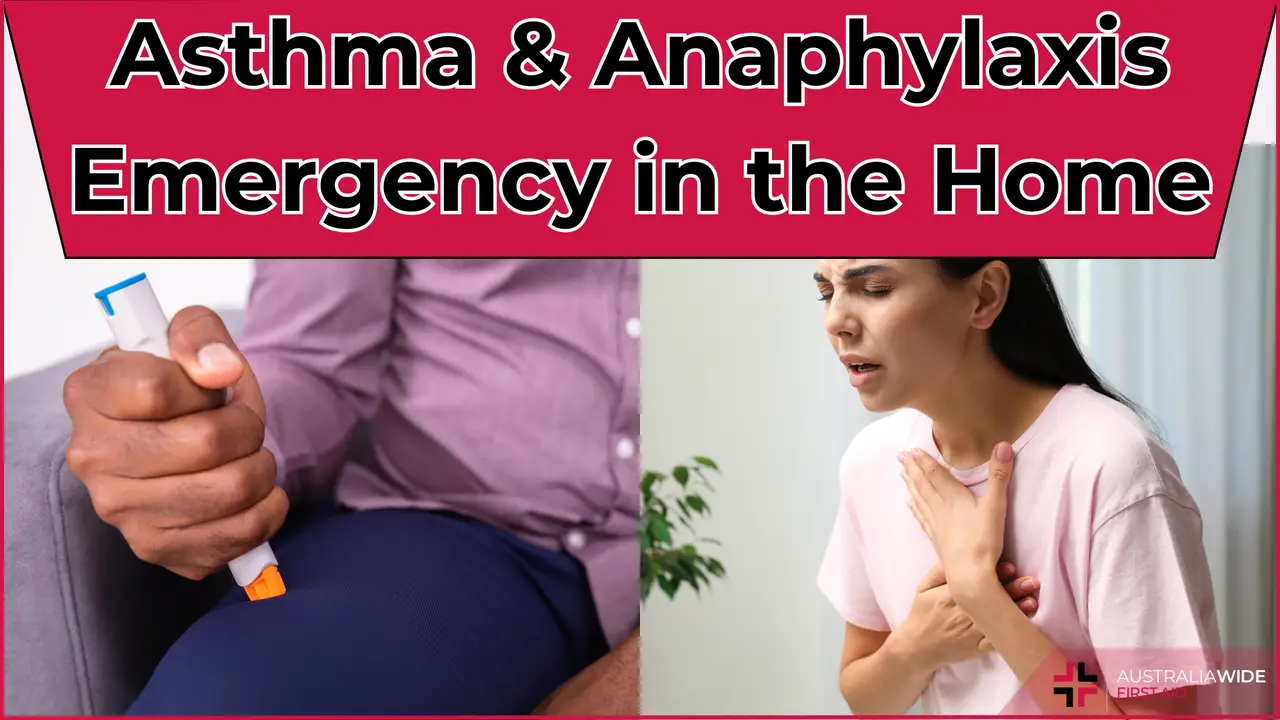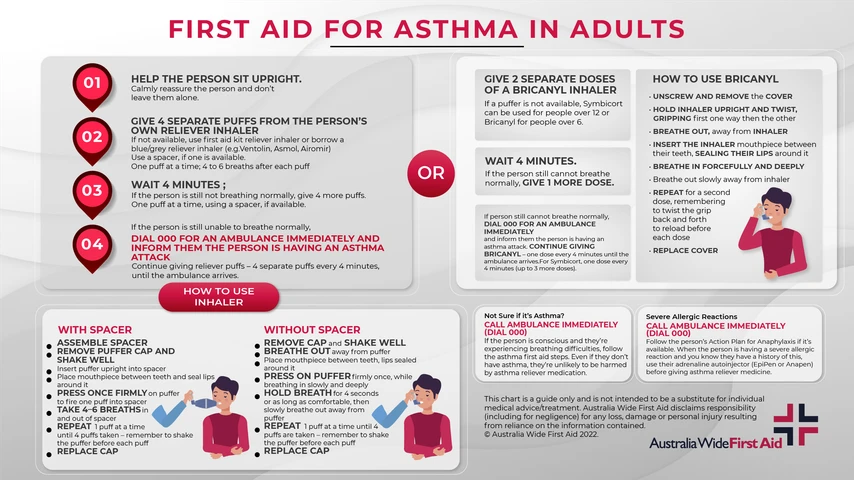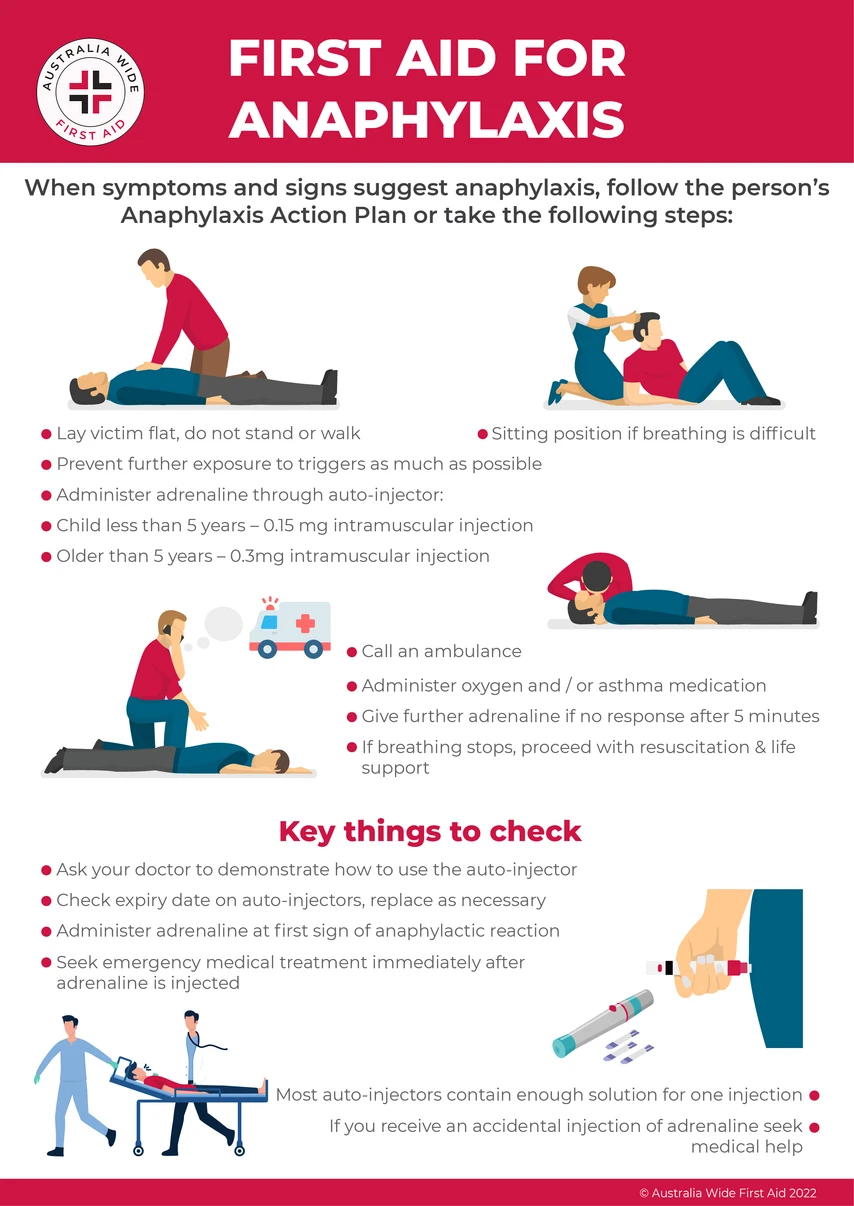Asthma & Anaphylaxis Emergency in the Home


If asthma or anaphylaxis are very real threats to you, a family member, or a friend, it is important that both you and your home are prepared.
In order to be ready for an asthma or anaphylaxis emergency you should follow 3 steps:

The factors that cause someone to have an anaphylactic or asthmatic reaction are called ‘allergens’ or ‘triggers’.
For someone with anaphylaxis or asthma, it's critical that trigger substances be removed from the immediate environment to reduce the risk of anaphylaxis or an asthma attack.
In order to ‘trigger proof’ your home, you first need to know what the triggers are.
Triggers vary from person to person. You'll need to know what would cause the individual in question to react adversely. You will need to ask the person if this is new territory for you.
Anaphylaxis Triggers
Anaphylaxis is a life-threatening allergic reaction. You are more likely to experience an anaphylactic attack if you have previously had an allergic reaction to something.
Common allergens include foods such as:
Venom from Bites and Stings:
Medications:
Asthma Triggers
Asthma is a recurring illness of the airways, which become constricted by tightened muscles and the inside lining of the airways becomes swollen and produces thick, sticky mucus.
Common asthma triggers include:

So you can act fast in an asthma or anaphylactic emergency in the home, the next step is to know the symptoms.
In the event of a severe asthma attack, you should call 000 immediately.
Symptoms of a severe asthma attack include:

No matter how well you trigger proof your home, in sensitive cases, it takes just a small amount of the allergen to set off an attack.
For that reason, make sure you know how to react to an anaphylaxis and asthma emergency in your home.
First Aid for Anaphylaxis
First Aid for Asthma
Asthma emergencies can be frightening, confusing, and even life-threatening. Arm yourself with the knowledge of how to recognise and treat an asthma episode and asthma emergency with our fully-online Asthma First Aid course.
Or if you need asthma knowledge and skills for your workplace, our Workplace Asthma Management and First Aid gives you the skills and knowledge to be able to develop an asthma risk assessment and emergency management strategy to handle asthma episodes in the workplace. If you want to go one step further, our Workplace Asthma and Anaphylaxis Management and First Aid course also includes what you need to know about allergies and anaphylaxis.
All of our online courses can be completed at your work desk or in the comfort of your own home, with a Certificate of Completion to hand to your employer, put on your resume, or simply give you the peace of mind knowing that you can actually be helpful in an emergency situation.

October 2, 2013
In an asthma or anaphylaxis emergency you should know the symptoms, remove triggers, and know how to respond. Read on to understand these important aspects in the context of such an emergency.

May 7, 2024
Asthma, a chronic respiratory condition affecting millions worldwide, is often shrouded in myths and misconceptions. Despite how common it is, there is a distinct lack of common knowledge. This is leading to potential mismanagement and unnecessary anxiety for those living with asthma.

February 19, 2024
For many Australians, our city and outdoor lifestyles come with a hidden challenge – dust allergies. Dust mites, pollen, and other airborne particles can trigger allergic reactions, affecting a significant portion of the population.